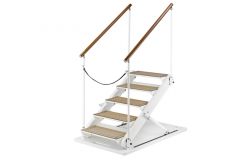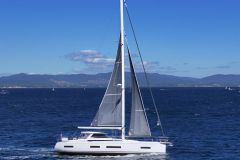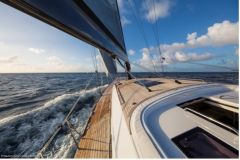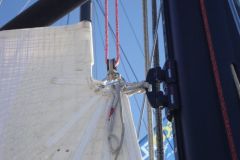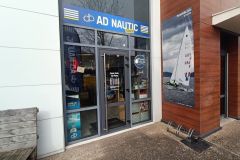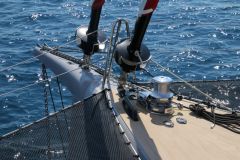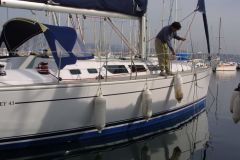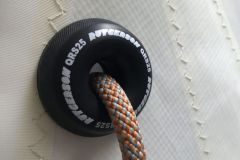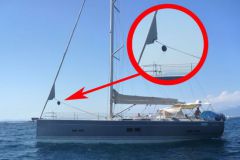Safety on board is not just a matter of common sense, it is also an architectural issue. Indeed, the ISO 15085 standard applies to the design of recreational craft and determines in particular the systems for preventing falls into the sea and boarding. This is the opportunity to review all the equipment that makes you feel safe on a boat.
The guardrail is a rigid structure permanently installed to prevent man overboard falls. It can be made of wood or metal.
The sector is a system of flexible lines supported by rigid structures or candlesticks. It is often found on sailboats all around the bridge.

The candlestick is a vertical bar that supports the guardrail or chain

Candelabra of cut
The balcony is a rigid frame replacing or extending a guardrail or chain. It can be located at the bow or at the rear.
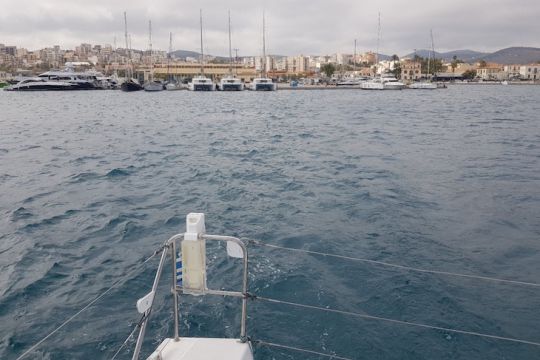
Rear balcony
The railing is a generic term for the parapet around the deck of a boat. It is synonymous with bulwarks.
The bulwark is the part of a boat that protrudes above the deck. Not to be confused with the wall which refers to the lateral part of the hull of a boat.
The handrails - also called a hand grip - describe all the parts of the boat that can be grasped by the hand to reduce the risk of falling, even if this is not its main function. We are talking here about handles, but also shrouds, cleats, windscreen tops, etc.
The footrest is a protrusion or growth of the deck, machined, molded or fixed, or any other device that provides a barrier or support to the foot when the boat heels or rolls. We are talking here about fargues rails, but also bulwarks or coamings.
The coaming is the raised part of the bridge or superstructure, often used to reduce the entry of water into a protected area.

 /
/ 

